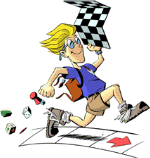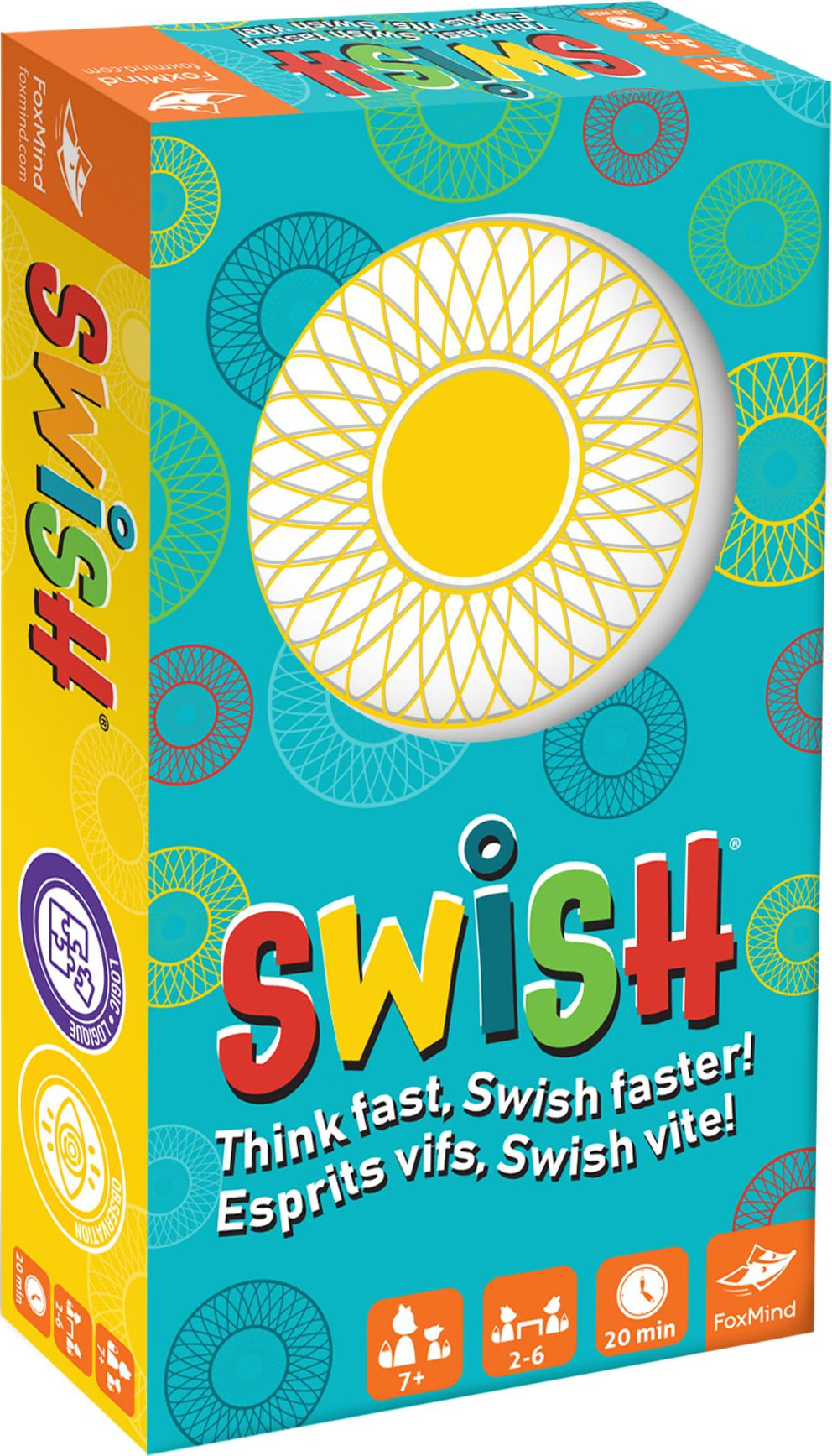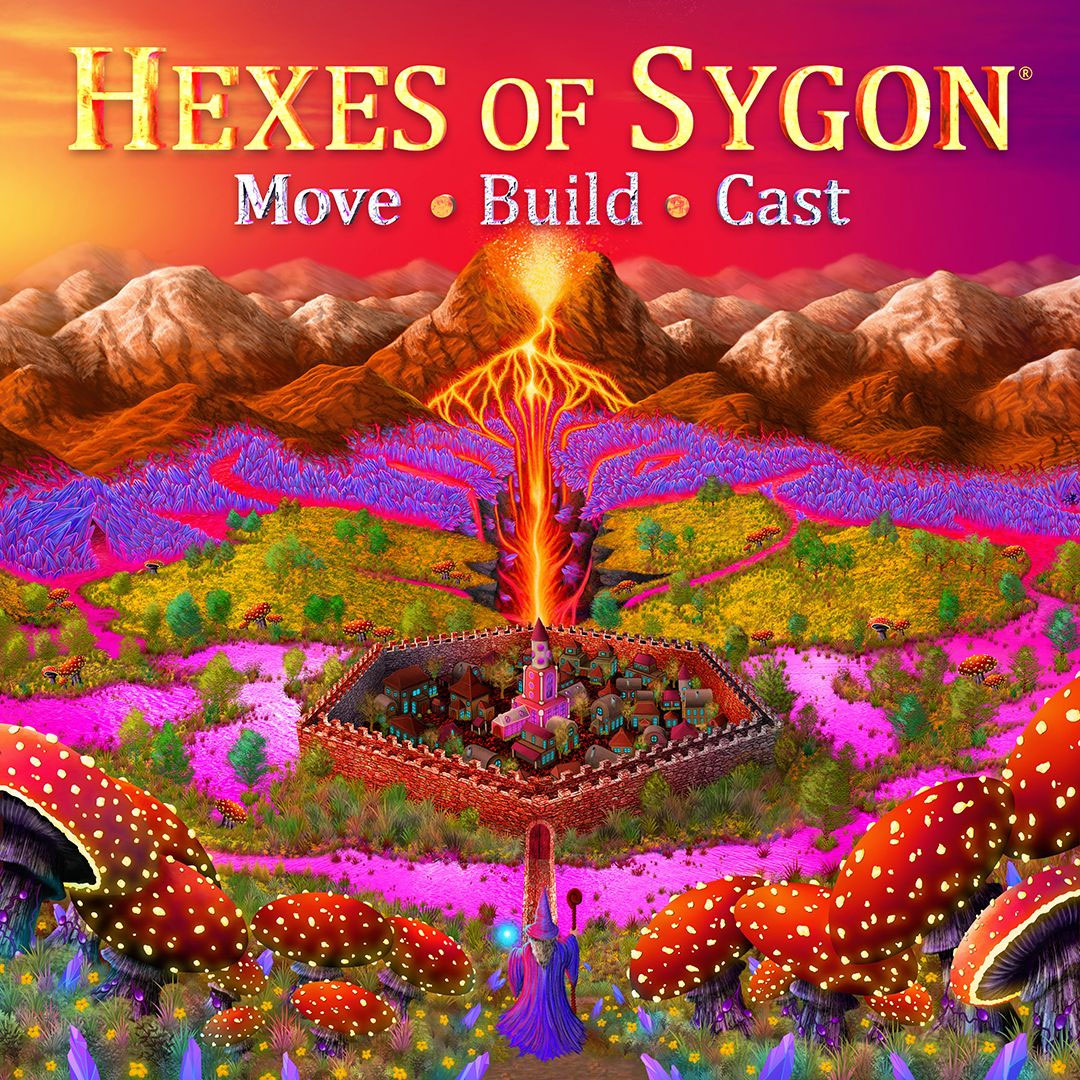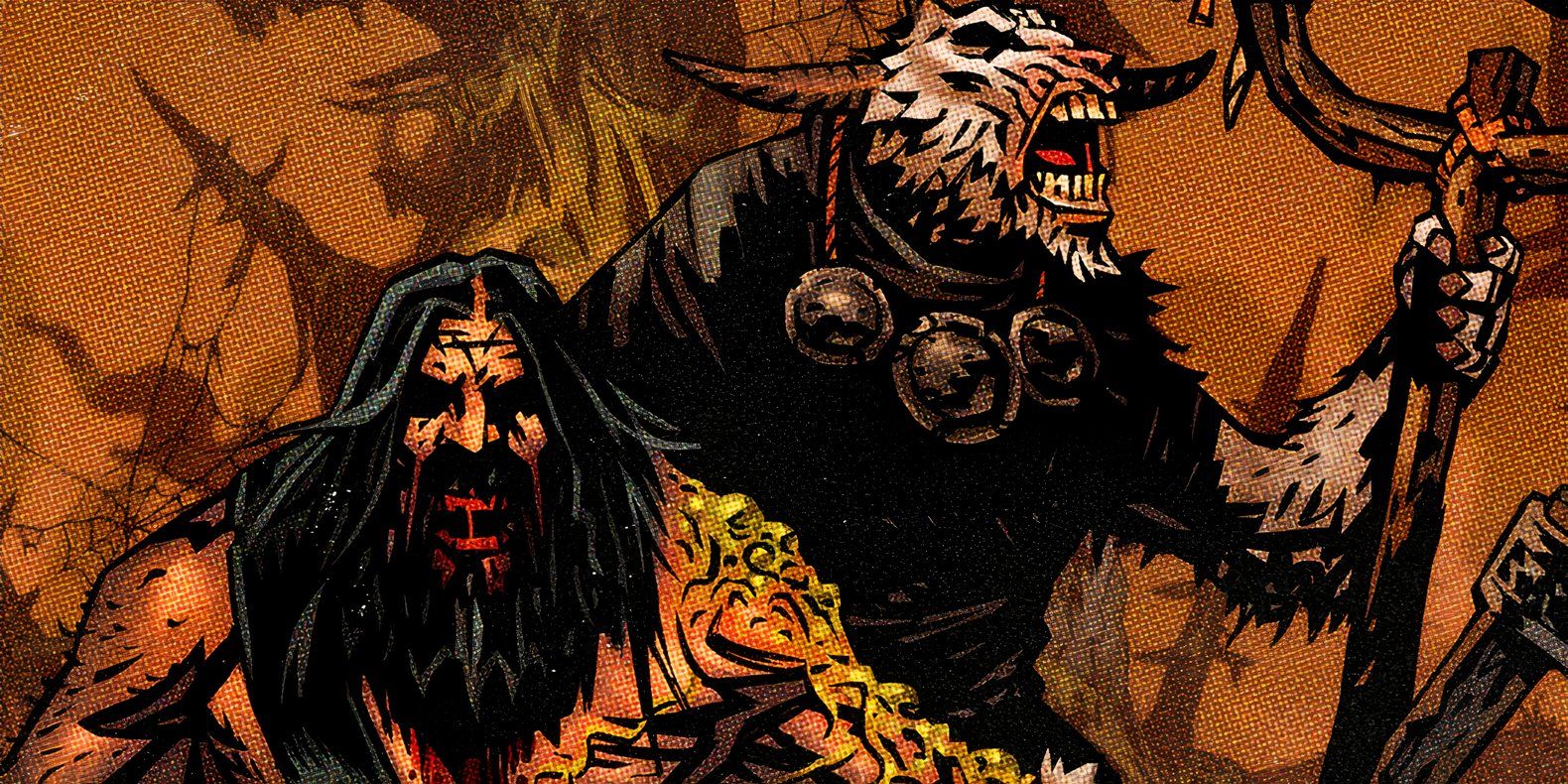PROTECT YOUR DNA WITH QUANTUM TECHNOLOGY
Orgo-Life the new way to the future Advertising by Adpathwayby Bonghwan Ju
In 2024, I attempted to bring the excitement of soccer onto the tabletop with Magic Number Eleven. (If you are not familiar with the game, I recommend reading my earlier designer diary.)My goal was to design a soccer game that wasn't too childish or overly complex, but rather one that struck a balance between strategy and luck. Looking back, I'd like to think that the result was quite successful.
As a small independent publisher from Asia, it was truly encouraging that the copies I had prepared for my first appearance at SPIEL Essen sold out (even if that quantity wasn't huge) and that I was able to sign a few export contracts with other countries.
Most importantly, I began to hear a strong demand for an expansion. Since the game revolves heavily around a variety of player cards, it was only natural that people wanted more of them.
The Challenges of Designing an Expansion
Developing an expansion is somewhat different from designing a game. Adding something new to an already "completed" framework requires a great deal of caution. An expansion can easily break the balance, clutter the rules, or unintentionally raise the game's overall weight and complexity.
The base game already contains plenty of elements
Yet despite these risks, many games still release expansions — likely because they are aimed at players who have already played the base game many times. It's similar to how Pandemic Legacy gradually introduces new rules and components; once the core mechanisms are well understood, adding "something more exciting" doesn't create much of a problem.
The real challenge, however, is defining what actually counts as "something more exciting".
Expanding the Star Player Cards
The base game contains twelve unique Star Player cards, and each player drafts three of them to add to their base squad. This draft is where much of the game's replayability comes from, so expanding the roster of Star Players felt like the obvious step forward.
The real question, however, was how many to add.
The twelve Star Players in the base game
It may seem that having as many as possible is always better, but that's not entirely true.
The player cards in this game are divided into three types — Forwards, Midfielders, and Defenders — so what would happen if there were, say, twenty Forwards, twenty Midfielders, and twenty Defenders?
During the draft, when revealing three cards at a time, the odds of getting stuck with only one position showing up again and again would become quite high. I could have designed the draft so that cards were separated by position and one of each type revealed, but that would add extra fiddliness; additionally, forcing an artificial balance between positions wasn't what I intended.
In the end, rather than adding an overwhelming number of new star players, I decided to keep the increase modest: three new cards for each position, nine in total.
Rather than simply increasing the number of cards, I focused on introducing abilities that hadn't existed before. This led to the creation of star players with unique and exciting powers — like a defender who can still attack, a striker who focuses solely on offense, and a midfielder who can permanently ignore defensive walls.
Newly added nine Star Players
The Birth of a New Team
I didn't massively increase the number of Star Players, but there was another way to bring a fresh twist to the player pool: add a brand new team.
The base game has two teams — Home and Away — that are almost identical apart from a few icon placements.
In practice, both teams start with essentially the same basic squad of players, and asymmetry emerges only through the addition of three drafted Star Players. Some people felt this was a bit underwhelming.
That's when the idea of creating a third team came to mind, and I knew I wanted it to stand apart from the existing two.
The new away team
The player cards of the original teams were built around a 4-3-3 formation. I chose a 3-5-2 formation for the third team.
Testing combinations in a 3-5-2 formation
In the original 4-back system, the defense consisted of two center backs with a defensive focus and two fullbacks with a slightly more offensive tendency. To create a truly different feel, I felt that a 3-back line composed entirely of center backs would be the most fitting option. Even though it has fewer defenders, the formation feels tighter and more solid overall.
The midfield was expanded to five players. The base game had no wide midfielders, but the new team has both a left midfielder and a right midfielder. There is also a midfielder with attacking power on par with a forward, adding even more variety to the line-up.
The attack is built around a more traditional two-striker system. Among them, my personal favorite is the BULLDOZER card.
The BULLDOZER represents a forward who constantly presses defenders at the front line, stealing opportunities through sheer pressure. When played, it removes an opponent's synergy card — but at the same time, you must discard one of your own. This reflects the idea that while the player succeeds in disrupting the opponent through tireless pressing, it also drains their own stamina and leaves their attacking formation less organized.
Bringing VAR to the Table
VAR — a video assistant referee — has become an inseparable part of modern soccer. Whenever a foul occurs, both players and spectators immediately turn their eyes to the referee's hand gesture.
Fortunately, the base game already had a "tackle" card, which turned out to be a perfect fit for introducing VAR into the system.
In the base game, whenever the tackle card was played, it invariably resulted in a penalty kick — but if you look closely at those situations, they aren't all the same.
Sometimes the attacker's strength was far greater than the defender's, and conceding a penalty was practically the only option left. On the other hand, when the attacker's strength was no higher than the defender's — or even weaker — the tackle card felt like an unfair punishment. (Note: At times, a tackle card can be played from your deck even if you didn't intend to.)
It was precisely at this point — where the difference between attacking and defending strength varies every time a tackle is used — that I realized VAR would be a perfect element to apply.
Here was the idea: When a tackle is played, the difference between the attacker's strength and the defender's strength is measured and set as the "tackle strength". The higher the strength, the greater the chance of conceding a penalty kick.
To represent this, I created a VAR card system. VAR cards come in three types — Penalty Kick, Free Kick, and No Foul — and those VAR cards work in this way:
• If the tackle is weak, one card is drawn at random from all three.
• If the tackle is moderate, one is drawn from only two.
• And if the tackle is very strong, it automatically results in a penalty kick.
In a way, this player aid is the referee
Sent Outs and Free Kicks
During this process, two new concepts naturally emerged: sent outs and free kicks.
If a very strong tackle is made — so strong that there is no need for VAR — the team immediately receives a yellow card. If that team collects a second yellow card, it turns into a red card, and one of their players is sent out from the match.
The concept of a sent out was one of the trickier parts to implement. When a player is sent out, it was obvious that one of the team's player cards on the board should be removed. The real problem was deciding which card.
Unlike real soccer, in which yellow cards are given to individuals, in this game the card is given to the team as a whole. At the same time, creating a separate rule just to designate which card gets removed felt unnecessarily cumbersome.
At times like this, a designer needs to make a bold decision. My choice was to let the team that receives the sent out decide which of their players would leave the field. My reasoning was simple: In a one-on-one game in which player cards are placed on the board turn by turn, losing any card is a significant loss, no matter what it is.
Of course, I could have given the choice to the opposing team so they could inflict a harsher penalty, but that felt thematically off. Instead, it made more sense to imagine it from the perspective of a manager who had instructed a specific player to "go in hard with the tackle".
Removing a player also removes some combined icons, weakening the team
Another element I added was the free kick. I had long regretted the absence of set pieces in the base game. (In fact, early prototypes included both free kicks and corner kicks, but they were later cut.)
There are many possible ways to implement a free kick, but I wanted to reuse the existing penalty kick card set.
The penalty kick card set
The method was simple: A free kick should naturally have a lower success rate than a penalty kick.
In penalty kicks, the defending side chooses just one defense card. For free kicks, however, the defender chooses two — one representing the goalkeeper's range, and the other functioning as the "defensive wall".
This means the attacker can score in only one of the five possible goal spots, making the probability roughly 20%. That felt like a satisfying number. (Of course, in real soccer, the success rate of direct free kicks is closer to 5%, but in a board game, such real-world figures need to be meaningfully exaggerated to keep the play exciting.)
The Bold Experiment: Corner Kicks Through Flicking
Apart from that, the newly added element of the corner kick is probably the most controversial part of this expansion.
At first, I had no intention of including it, but I couldn't shake this thought: If there are free kicks, having no corner kicks feels incomplete.
In real soccer, a corner kick happens when the defending side fails to clear the ball fully, which suggested a scenario in which offense and defense are evenly matched but the attacker holds a slight edge.
I set the trigger accordingly: when attacking and defending strengths are tied, but the attacking side holds stronger initiative (Control).
If your opponent's Control marker is in blue zone, there are more chances for the corner kick
This was a part of the design I wrestled with until the very end. At one point, I considered simply triggering a corner kick whenever the attacking and defending strengths were tied as this would have been much simpler.
But my concern was that corner kicks might end up happening too frequently. The core of this game lies in the tug-of-war over control, carefully building up attack power and synergies to score goals.
If additional events like corner kicks occurred too often, I worried they would break the flow of that central struggle. For this reason, I decided to set the conditions for corner kicks more conservatively.
The next challenge was how to actually implement corner kicks. In real soccer, corner kicks have an even lower scoring probability than free kicks. I experimented with several approaches that reused the penalty kick card set, aiming to create a scoring chance of less than 20%, similar to how free kicks were handled, but none of those solutions felt quite right.
For corner kicks, I wanted to try something completely different. Ironically, the method I landed on was flicking.
In my previous designer diary, I had stated that I would not create a flicking-style soccer game.
That promise still holds true.
The reason I applied flicking here was because the corner kick is not part of the game's core system; it's more of a "mini-game" or a "bonus stage".
Flicking undeniably delivers a primal kind of fun that you can also feel in real soccer. By introducing it here, my aim was to provide a completely new sensation that could be experienced only through the expansion.
Another reason was probability. The success rate of corner kicks needed to be lower than that of free kicks (20%). I wanted scoring from a corner kick in this game to feel extremely difficult. In testing, it usually succeeded only about once in ten to fifteen attempts.
But that rarity made the moments of success all the more thrilling. To me, that feeling is similar to the mindset we have when watching real soccer. We tune in hoping to witness those rare, miraculous goals that happen once or twice in a match.
Of course, flicking also belongs to the realm of "manual skill", where practice can make someone a true expert. This was another reason I set the trigger conditions for corner kicks somewhat conservatively. That said, I can't help but think how fun it would be someday to meet a player who has become a true "corner kick specialist".
I've shared some of the thoughts and processes that went into developing Magic Number Eleven: Expansion. Since this was my first time creating an expansion, there are certainly parts I wish I could have done better. In the end, though, it will be up to the players to judge.
I don't yet know if there will be another expansion in the future, but with this one, my hope is that it allows you to enjoy soccer on the tabletop in a deeper and more exciting way.
Bonghwan Ju


 13 hours ago
1
13 hours ago
1
/pic8853490.jpg)
/pic8002963.jpg)
/pic9107638.png)
/pic9107639.png)
/pic9052523.jpg)
/pic9052536.jpg)
/pic9052543.jpg)
/pic9107637.png)
/pic9052577.jpg)
/pic9052585.jpg)
/pic9052607.jpg)
/pic9052621.jpg)
/pic9052678.jpg)
/pic9052628.jpg)
/pic9107640.png)
/pic9052652.jpg)
/pic9052699.jpg)
/pic9052712.jpg)
/pic9052722.jpg)
/pic8853500.jpg)
/pic8002960.jpg)






/pic8453882.jpg)










 English (US) ·
English (US) ·  French (CA) ·
French (CA) ·